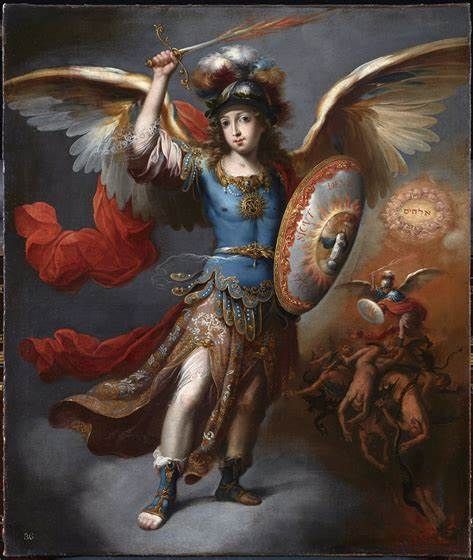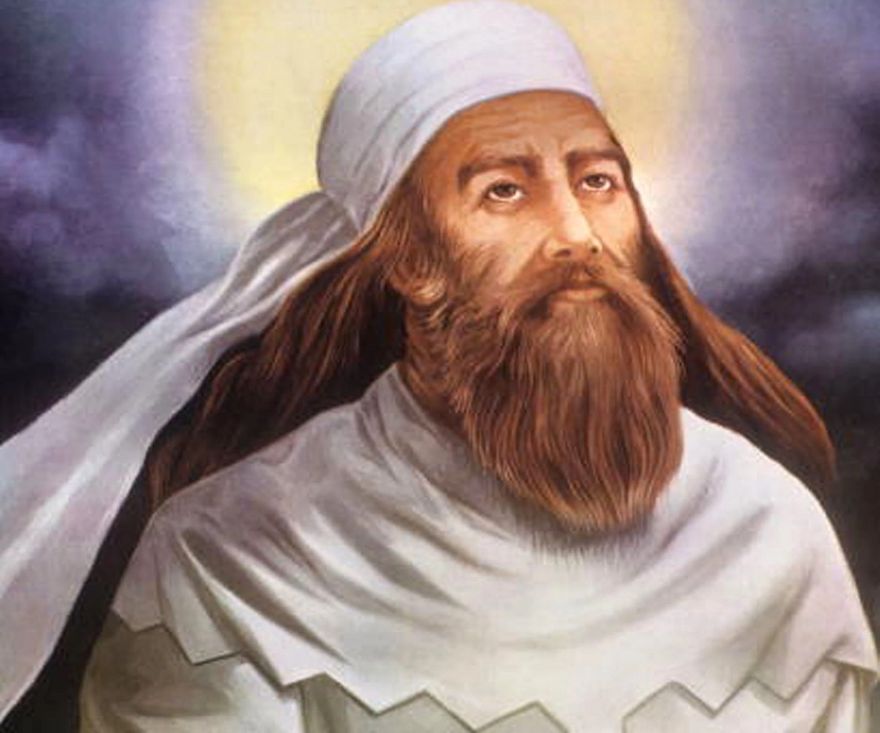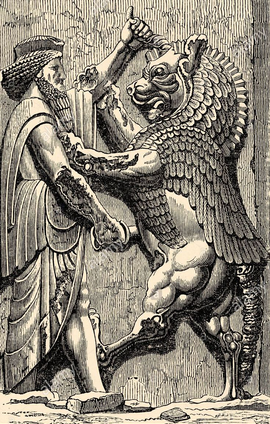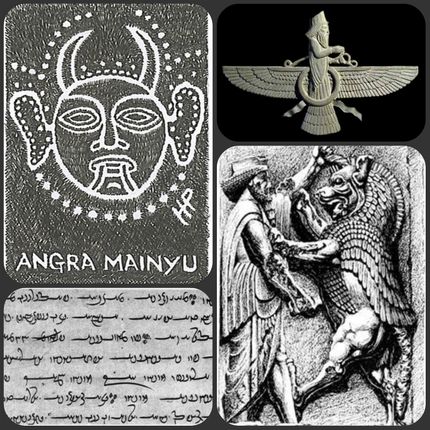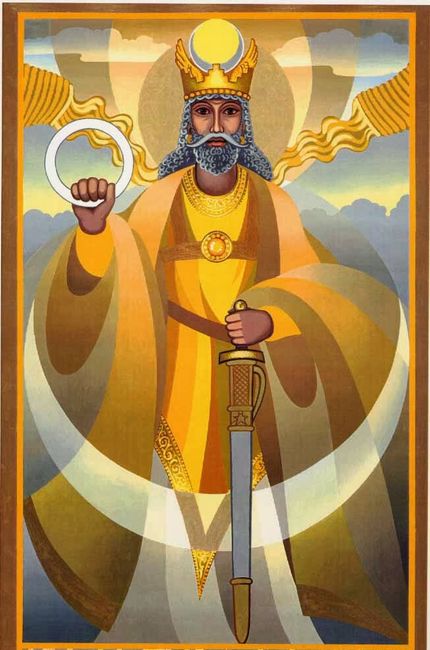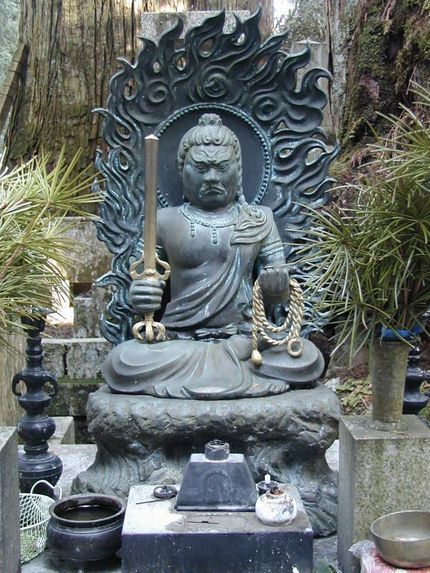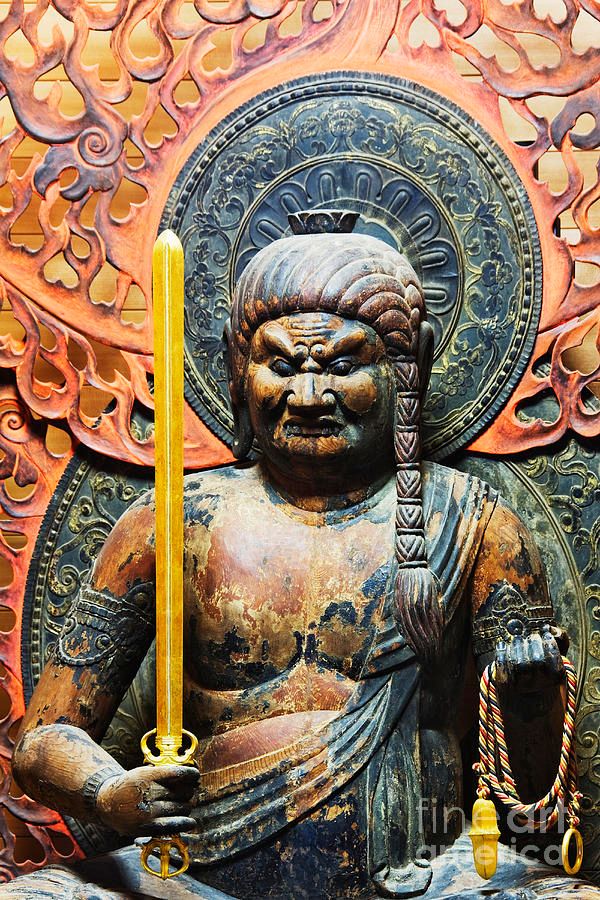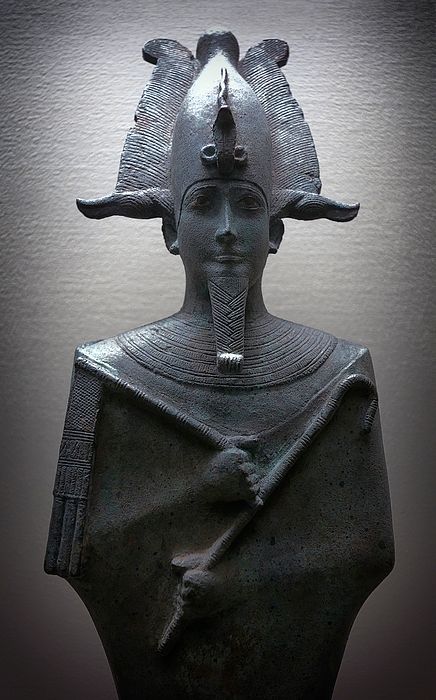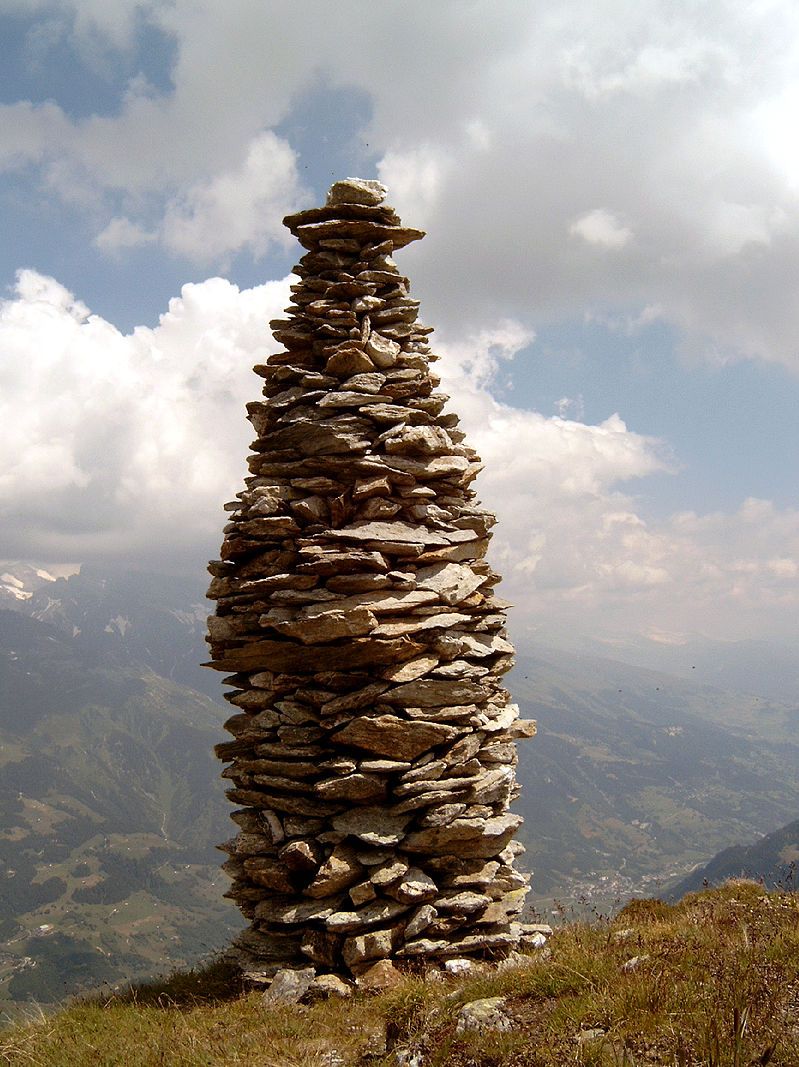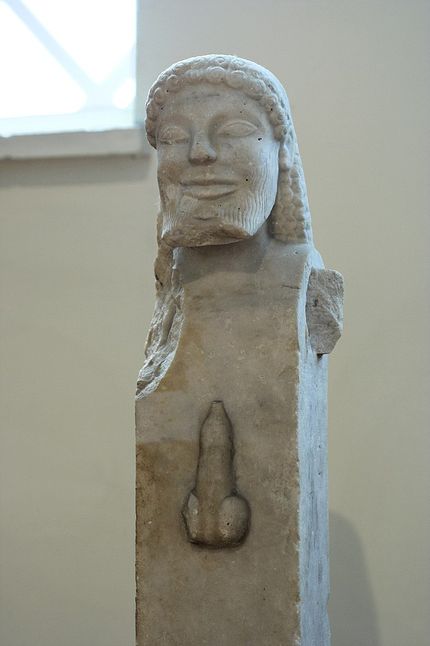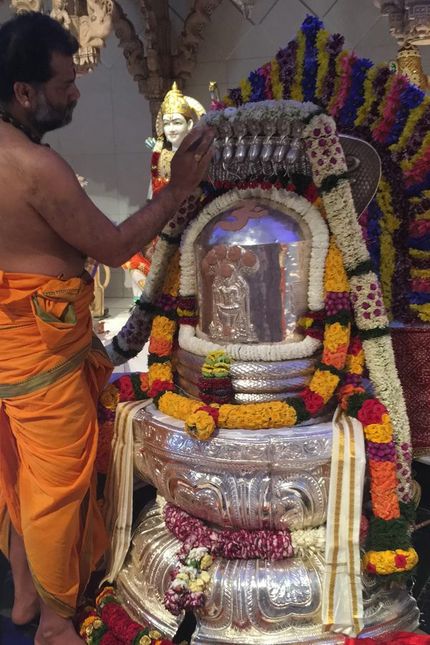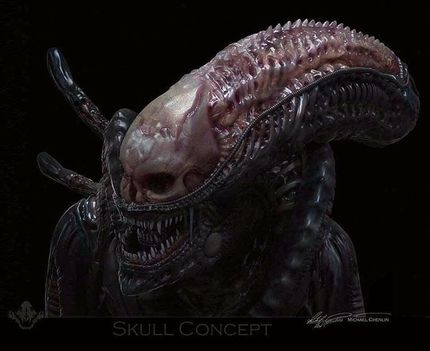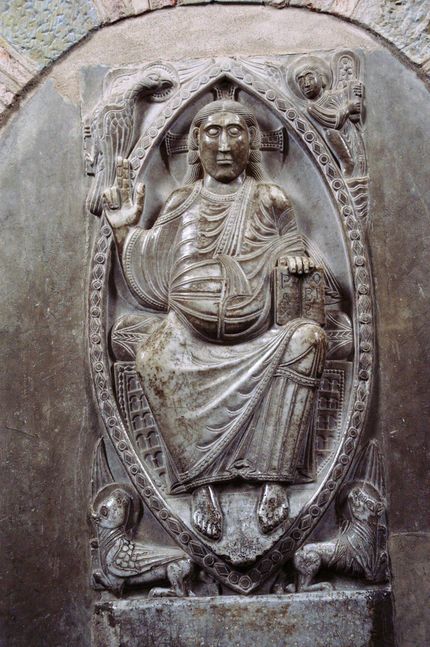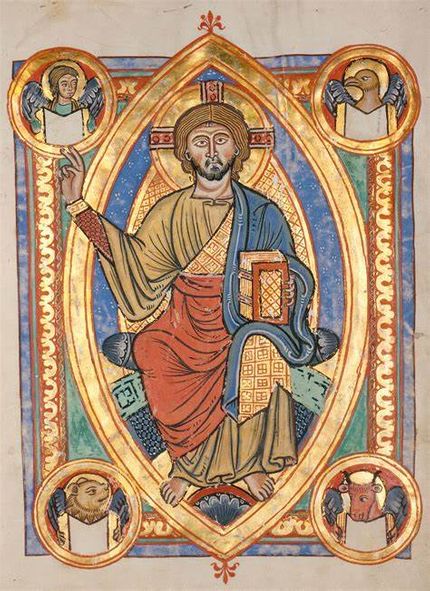Now, when Marco Polo had mentioned about the "mediator" or "God of this world" in Godfrey Higgins' "The Anacalypsis", he states the Chinese to having an idol of the physical God called "Natigai", to which they would pray for protection and such. This same segment is also based on the Japanese "Kojin" and "Fudo Myoo" to whom is called "fire man". Now, I had thought this would be the case as this to be "Yaldabaoth", but when finding further information on Michael being AGNI, it's shown that this is the Angel that defeated the Dragon God.
This is why I had stated on the story of "Red Horn" and how He connects to Agni, as the "fiery angel" that was sent to battle the alien entities and Giants. Now, based from Blavatsky's account in "The Secret Doctrine" details that based on their traditions, the Jews were worshipers of Bacchus who is Dagon. Even Robert Temple's book "The Sirius Mystery" had detailed how the Amphibian God Dagon only chose the Jewish people out of all the nations. Based from these statements had made me to think that if this God is shown to rule over Kingdoms and nations, then it seems that this is "Yaldabaoth".
So, when this God states that he chooses the nation of Israel out of all the nations, I had to question are they supposed to be the Aryans that came into the land? However, both of their accounts didn't detail that the Bible is actually based on the Aryans going into the lands of India and China. Meaning that when they stated the Jewish God to being Bacchus, that would be correct because the Vatican Church had created Judaism. Christianity actually preceeded Judaism, which is why they made sure to fool people by establishing that land in Palestine which is now called Israel. Plus, they are not going to detail how Christianity was brought by the black people, and how it has always been based on worship of the Dragon God.
The religions of Islam, Christianity and Judaism have connections to the worship of the Black God Dagon, all through the black stone, the Groves, the pillar to the six-pointed star symbolism. The Jewish religion is loosely based on Brahminism, but with Roman influence. This is why the Jewish weddings, the Jewish attires and practices are based on Roman Catholicism. Then when you look to Islam, the Hijabs and Burqahs are based on Roman Catholism. Then there is the Black stone and Cube symbolism which goes back to Saturnian worship. They all worship the same Gods that came down from the skies and brought the religion of the Cross.
This is how I know not to be fooled by History, and that is by learning about the Occultic symbolism based from the three Abrahamic faiths leading bac to Hunduism. When learning about the Phallic pillar that Jacob had erected, it was a dead give away that the Bible is based on Hinduism. So, now I had to ask, if the God of this world is Bacchus and was worshiped throughout the world, then why state to the Israelites to destroy the pillars and Groves to which is attributed to himself?
The reason why I state this is because, when the story states of the Brahmins being led by their God arriving in those lands of India and China, it's revealed that their God aren't the same Gods being worshiped in Asia and India. As it turns out, this God is a totally different deity to which he would be called "Agni", and was the one who defeated the Dragon God. This is the reason why the God of fire states to destroy the pillars and groves belonging to Baal and Ashtoreth, to which are forms of worship towards Osiris and Isis. So, if these Gods that were worshiped in the land are known for their phallic pillars and groves, then there isn't any change in that situation.
The Bible is paralleled to the story of the Aryans being led by this fire deity, and is not the one called "Bacchus" who is the God that is called the Osiris of those lands. Just as the book "The Anacalypsis" states, the Buddha is based on Krishna, Vishnu, Thoth and Bacchus, and thus would be called "Jesus Christ" who would be Dagon.
Now, based from the Nag Hammadi scriptures details "Sabaoth" being taken up by Sophia and was given a Kingdom to rule above "Yaldabaoth" from which he was born from. As stated from the last Chapter, this pertains to Enoch who was taken up to Heaven and was given authority by God to rule Heaven and Earth, thus becoming what it seems the "Demiurge" that is proposed by the Gnostics. Could there be two beings as labeled "the demiurge"?
Now, comes the story of Melek Taus as the one who was given authority to rule Heaven and Earth by God. This is also where the Demiurge story details as this being was "placed" by God to rule the people on earth and bring karma and justice. Just as stated from the Yezidi Website details the Peacock Angel to having other manifestations on Earth like St. George, Murugan, Krishna, the Green man, Osiris, Dionysus/Bacchus and Michael the Archangel.
I will detail that when I first started learning about this being, what kept confusing me was the story on if he would be the "Red Dragon" that was defeated, or was he Michael as the one that defeated the Red Dragon. Or are they one and the same? This is where I had stated that there had to be two beings called "Thoth" or "Enoch", as the story of Iblis is the story of Enoch going up to Heaven, but to find the identity of who defeated who was the question. There is Thoth as the Baboon who represents the dog star sirius, then there is Thoth as the bird Ibis. This was my original notion on Agni being the Red Dragon that fought against Michael the Archangel, who would be Horus or Bacchus in that matter. However, what changed this thesis was learning about the "intervention" theory and how this had changed the evolution of mankind. In the Galactic Warfare series, I was putting the puzzle pieces together on this situation based from Credo Mutwa's story, to Sadghuru's statement on Shiva coming down and changing mankind's evolution, to even the talk on "Legacy of the Gods" on "the othersideofmidnight", detailing how an Extraterrestrial race came to Earth a long time ago.
Though these are just some of the examples, but it turns out that this group would have many names throughout the cultures, as some would call them "Anunnaki", "Chitauri", "Nommo" to the what the gnostics deemed are the "Archons" led by Samael or "Yaldabaoth". The reader would have to look up the last two chapters in this website for the intervention theory analysis, because this pertains to the "Red Dragon" and his angels coming down after the battle against Michael and his Angels. It turns out that one called Michael is based on the story of "Red Horn", who is the "red haired" angel that battled against the "red haired" dragon god. This is why the intervention story connects heavily to Revelations12:12, as there were already inhabitants living on earth when this occured. Then when you go to the beginning of Genesis, it states "let us make man in our image", meaning they weren't creating man, for man was already here. This statement details that they were "altering" the already existing inhabitants of the land, and how we got to where we are today.
Shiva arriving on earth is based on the story of the Red Dragon and his Angels, and based from his pillar symbolism, shows that he has other epithets like Bacchus, Dionysus, Thoth, Christ, Vishnu, the Buddha, Krishna, Melek Taus the Peacock Angel, to Saturn. It's natural to find the story of the Saturnians being thrown to Tartarus is based on the Red Dragon and his forces being thrown into Earth, thus establishing base. He would be what the Gnostics call Samael, Yaldaboath and Jehovah or Saturn.
Now, based on the story of the Demiurge, it would seem that the entity call "Yaldabaoth" who is the lion faced entity is the "God of this world". But I often wonder if there is a theory on Michael the Archangel also being a "demiurge" as well. Meaning that not one force on Earth but two forces (or more) that are contending for the domination of earth. Based from "The Testament of Amram" does deal with two watchers trying to rule over mankind, or Israel in that matter. Then based from each side also connects to the Zoroastrian deity "Ahura Mazda" battling "Angra Mainyu" (Arhiman) as two rival forces contending against each other for domination. Let's see the "Testament of Amram":
Manuscript B Fragment 1 (9) [... 1 saw Watchers] (10) in my vision, the dream-vision. Two (men) were fighting over me, saying ... (11) and holding a great contest over me. I asked them, ‘Who are you, that you are thus empo[wered over me?’ They answered me, ‘We] (12) [have been em]powered and rule over all mankind.’ They said to me, ‘Which of us do yo[u choose to rule (you)?’ I raised my eyes and looked.] (13) [One] of them was terr[i]fying in his appearance, [like a serpent, [his] cl[oa]k many-colored yet very dark... (14) [And I looked again], and ... in his appearance, his visage like a viper, and [wearing ...] 15) [exceedingly, and all his eyes ...]
Fragment 2 (1) [... em]powered over you ... (2) [I replied to him,] ‘This [Watcher,] who is he?’ He answered me, ‘This Wa[tcher ...] (3) [and his three names are Belial and Prince of Darkness] and King of Evil.’ I said, ‘My lord, what dom[inion ...?’] (4) [’and his every way is darkened, his every work da[rk]ened. In Darkness he ... (5) [Yo]u saw, and he is empowered over all Darkness, while I [am empowered over all light.] (6) [... from] the highest regions to the lowest I rule over all Light, and over al[1 that is of God. I rule over (every) man] Fragment 3 (1) [of His grace and peace. Over all the sons of Lig]ht have] I been empowered.’ I asked him, [What are your names ... ?’] (2) He [s]aid to me, ‘[My] three names are [Michael and Prince of Light and King of Righteousness.’
Now, let's see what the "Ahura Mazda" states in the Wiki: "Ahura Mazda, also known as Oromasdes, Ohrmazd, Ahuramazda, Hourmazd, Hormazd, Hormaz and Hurmuz, is the creator deity in Zoroastrianism. He is the first and most frequently invoked spirit in the Yasna. The literal meaning of the word Ahura is "lord", and that of Mazda is "wisdom".
'Ahura' is cognate with the Vedic word 'asura', both meaning 'lord'. Finnish Indologist Asko Parpola traces the etymological root of Asura to *asera- of Uralic languages, where it means 'lord, prince'."
"'Mazda', or rather the Avestan stem-form Mazdā-, nominative Mazdå, reflects Proto-Iranian *mazdáH (a feminine noun). It is generally taken to be the proper name of the spirit, and like its Vedic cognate medhā́, means "intelligence" or "wisdom". Both the Avestan and Sanskrit words reflect Proto-Indo-Iranian *mazdʰáH, from Proto-Indo-European *mn̥sdʰh₁éh₂, literally meaning "placing (*dʰeh₁) one's mind (*mn̥-s)", hence "wise".
"The name was rendered as Ahuramazda (Old Persian) during the Achaemenid era, Hormazd during the Parthian era, and Ohrmazd was used during the Sassanian era. The name may be attested on cuneiform tablets of Assyrian Assurbanipal, in the form Assara Mazaš, though this interpretation is very controversial."
(Here they state the term "Ahura" is based on "Asura" which they state "Lord" or "Prince". Based from Hindu text details the Asuras to be the evil forces against the Devas, while from the Persian perspective, details the devas or "Daevas" to being the evil forces against the Asuras which are the good forces)
Characteristics: "Even though it is speculated that Ahura Mazda was a spirit in the Indo-Iranian religion, he had not yet been given the title of "uncreated spirit". This title was given by Zoroaster, who proclaimed Ahura Mazda as the uncreated spirit, wholly wise, benevolent, and sound, as well as the creator and upholder of Asha."
Then based from "Angra Mainyu" states this: "Angra Mainyu is the Avestan-language name of Zoroastrianism's hypostasis of the "destructive/evil spirit" and the main adversary in Zoroastrianism either of the Spenta Mainyu, the "holy/creative spirits/mentality", or directly of Ahura Mazda, the highest deity of Zoroastrianism. The Middle Persian equivalent is Ahriman 𐭠𐭧𐭫𐭬𐭭𐭩 (anglicised pronunciation: /ˈɑːrɪmən/). The name can appear in English-language works as Ahrimanes."
"Avestan angra mainyu "seems to have been an original conception of Zoroaster's."In the Gathas, which are the oldest texts of Zoroastrianism and are attributed to Zoroaster, angra mainyu is not yet a proper name.[a] In the one instance in these hymns where the two words appear together, the concept spoken of is that of a mainyu ("mind", "spirit" or otherwise an abstract energy etc.)[b] that is angra ("destructive", "chaotic", "disorderly", "inhibitive", "malign" etc., of which a manifestation can be anger). In this single instance – in Yasna 45.2 – the "more bounteous of the spirits twain" declares angra mainyu to be its "absolute antithesis".
"A similar statement occurs in Yasna 30.3, where the antithesis is however aka mainyu, aka being the Avestan language word for "evil". Hence, aka mainyu is the "evil spirit" or "evil mind" or "evil thought," as contrasted with spenta mainyu, the "bounteous spirit" with which Ahura Mazda conceived of creation, which then "was". The aka mainyu epithet recurs in Yasna 32.5, when the principle is identified with the daevas that deceive humankind and themselves. While in later Zoroastrianism, the daevas are demons, this is not yet evident in the Gathas: Zoroaster stated that the daevas are "wrong gods" or "false gods" that are to be rejected, but they are not yet demons."
"Some have also proposed a connection between Angra Mainyu and the sage Angiras of the Rigveda. If this is true, it could be understood as evidence for a religious schism between the deva-worshiping Vedic Indo-Aryans and early Zoroastrians. In Yasna 32.3, these daevas are identified as the offspring, not of Angra Mainyu, but of akem manah, "evil thinking". A few verses earlier it is however the daebaaman, "deceiver" – not otherwise identified but "probably Angra Mainyu" – who induces the daevas to choose achistem manah – "worst thinking." In Yasna 32.13, the abode of the wicked is not the abode of Angra Mainyu, but the abode of the same "worst thinking". "One would have expected [Angra Mainyu] to reign in hell, since he had created 'death and how, at the end, the worst existence shall be for the deceitful' (Y. 30.4)."
In the Younger Avesta: "Yasna 19.15 recalls that Ahura Mazda's recital of the Ahuna Vairya invocation puts Angra Mainyu in a stupor. In Yasna 9.8, Angra Mainyu creates Aži Dahaka, but the serpent recoils at the sight of Mithra's mace (Yasht 10.97, 10.134). In Yasht 13, the Fravashis defuse Angra Mainyu's plans to dry up the earth, and in Yasht 8.44 Angra Mainyu battles but cannot defeat Tishtrya and so prevent the rains. "
"In Vendidad 19, Angra Mainyu urges Zoroaster to turn from the good religion by promising him sovereignty of the world. On being rejected, Angra Mainyu assails Zoroaster with legions of demons, but Zoroaster deflects them all. In Yasht 19.96, a verse that reflects a Gathic injunction, Angra Mainyu will be vanquished and Ahura Mazda will ultimately prevail."
"In Yasht 19.46ff, Angra Mainyu and Spenta Mainyu battle for possession of khvaraenah, "divine glory" or "fortune". In some verses of the Yasna (e.g. Yasna 57.17), the two principles are said to have created the world, which seems to contradict the Gathic principle that declares Ahura Mazda to be the sole creator and which is reiterated in the cosmogony of Vendidad 1. In that first chapter, which is the basis for the 9th–12th-century Bundahishn, the creation of sixteen lands by Ahura Mazda is countered by the Angra Mainyu's creation of sixteen scourges such as winter, sickness, and vice."
"This shift in the position of Ahura Mazda, his total assimilation to this Bounteous Spirit [Mazda's instrument of creation], must have taken place in the 4th century BC at the latest; for it is reflected in Aristotle's testimony, which confronts Areimanios with Oromazdes (apud Diogenes Laertius, 1.2.6). Yasht 15.43 assigns Angra Mainyu to the nether world, a world of darkness."
"So also Vendidad 19.47, but other passages in the same chapter (19.1 and 19.44) have him dwelling in the region of the daevas, which the Vendidad asserts is in the north. There (19.1, 19.43–44), Angra Mainyu is the daevanam daevo, "daeva of daevas" or chief of the daevas. The superlative daevo.taema is however assigned to the demon Paitisha ("opponent"). In an enumeration of the daevas in Vendidad 1.43, Angra Mainyu appears first and Paitisha appears last. "Nowhere is Angra Mainyu said to be the creator of the daevas or their father."
(The reader should note that the story of Zoroaster being tempted by Angra Mainyu is the story of Jesus being tempted by the devil. Interesting that Zoroaster is shown with "red hair" in some images. The Prophet Muhammed was said to have red hair as well)
In Zurvanite Zoroastrianism: "Zurvanism – a historical branch of Zoroastrianism that sought to theologically resolve a dilemma found in a mention of antithetical "twin spirits" in Yasna 30.3 – developed a notion that Ahura Mazda (MP: Ohrmuzd) and Angra Mainyu (MP: Ahriman) were twin brothers, with the former being the epitome of good and the latter being the epitome of evil."
"This mythology of twin brotherhood is only explicitly attested in the post-Sassanid Syriac and Armenian polemic such as that of Eznik of Kolb. According to these sources the genesis saw Zurvan as an androgynous deity, existing alone but desiring offspring who would create "heaven and hell and everything in between." Zurvan then sacrificed for a thousand years. Towards the end of this period, Zurvan began to doubt the efficacy of sacrifice and in the moment of this doubt Ohrmuzd and Ahriman were conceived: Ohrmuzd for the sacrifice and Ahriman for the doubt. Upon realizing that twins were to be born, Zurvan resolved to grant the first-born sovereignty over creation. Ohrmuzd perceived Zurvan's decision, which he then communicated to his brother."
"Ahriman then preempted Ohrmuzd by ripping open the womb to emerge first. Reminded of the resolution to grant Ahriman sovereignty, Zurvan conceded, but limited kingship to a period of 9000 years, after which Ohrmuzd would rule for all eternity.: 419–428 Eznik of Kolb also summarizes a myth in which Ahriman is said to have demonstrated an ability to create life by creating the peacock."
"The story of Ahriman's ripping open the womb to emerge first suggests that Zurvanite ideology perceived Ahriman to be evil by choice, rather than always having been intrinsically evil (as found, for example, in the cosmological myths of the Bundahishn). And the story of Ahriman's creation of the peacock suggests that Zurvanite ideology perceived Ahriman to be a creator figure like Ormazd."
"This is significantly different from what is found in the Avesta (where Mazda's stock epithet is dadvah, "Creator", implying Mazda is the Creator), as well as in Zoroastrian tradition where creation of life continues to be exclusively Mazda's domain, and where creation is said to have been good until it was corrupted by Ahriman and the devs."
Interesting note on Ahriman creating the "Peacock" just to show he can create life. The symbolism of the Peacock is shown in the Testament of Amram as the watcher that contends against Michael. It's also interesting to find that they would be considered "twin brothers" in this version. This is basically like the story of Quetzalcaotl and Xolotl being twins, to the Hindu Agni and Indra being twin brothers. This "twin" is referenced in the show "Lucifer", as Lucifer has the twin brother Michael. I wonder if these Gods were twins, then could they both have been involved in taking the Israelites out of Egypt? As stated before, it seems like there were two different natures involved when Moses was talking to God. This makes me think that when Moses was talking to God, he could have been talking to either Angra Mainyu or Ahura Mazda (or maybe both). Anyway, just as the previous Chapter details, the image of Michael defeating a dog-like beast is shown in the same way as Ahura Mazda battling Angra Mainyu. Angra Mainyu is shown looking like a dog or lion like beast in the same way....
Jude 1:9 “Yet Michael the archangel, when contending with the devil he disputed about the body of Moses, durst not bring against him a railing accusation, but said, The Lord rebuke thee.”
Now, let's look at the Turkic/Mongolian deity called Ulgen: "Bai-Ülgen or Ülgen (Old Turkic: Bey Ülgen; also spelled Bai-Ulgen, Bai-Ülgen, Bay-Ulgan, Bay-Ulgen, or Bay-Ülgen; Khakas, Shor and Altay: Ӱлген; Mongolian: Үлгэн) is a Turkic and Mongolian creator-deity, usually distinct from Tengri but sometimes identified with him in the same manner as Helios and Apollo. His name is from Old Turkic bay, "rich", and ülgen, "magnificent". Ülgen is believed to be without either beginning or end."
"In Turkic and Mongolian mythology, the birch tree, regarded as a cosmic axis between earth and sky, was regarded as sacred to him, as was the horse (horse-sacrifice was a part of his worship). Ülgen symbolizes goodness, welfare, abundance, plentiness of food, water, etc. Furthermore, he created earth, heaven and all living beings. In addition, he controls the atmospheric events and movements of stars."
"He creates land for people to live on, the heads of both humans and animals and the rainbow. He was regarded as the patron god of shamans and the source of their knowledge. It is believed that Ülgen has been created from Tengri (Tengere Kayra Khan). He is the highest deity after Tengri in the Turco-Mongol pantheon."
"Often, Ülgen is compared with Tengri and at times they are thought to be on par, or even the same. In some sayings, the name/function of Ülgen may be (partially) interchangeable with that of Tengri. Ülgen is described as the enemy of Erlik who is the god of evil and darkness. Ülgen assumes the protectorship of humankind against him. Bai-Ülgen lives on the sixteenth floor of the sky above the stars, sun and moon in a golden house. Mere humans may never reach him, only shamans and kams who possess astral powers can."
"Animals are used for sacrifice in worship of him, especially horses. Once in every third, sixth, ninth, or twelfth year, a shaman may sacrifice a white horse as the first step of reaching Ülgen. Then he must ride its soul, penetrate through all the layers of heaven until he reaches Ülgen. Firstly, the kam (shaman) meets Yayık who is the servant of Ülgen. This entity informs the kam whether or not the offering has been accepted. If the sacrificial rite has been successful, the shaman is able to learn from the omniscient Ülgen of impending dangers, such as bad harvests."
Then based on "Erlik Khan" states this: "Erlik, Erlig, Erlik Khan, Erleg or Yerleg (Turkish: Erlik Han; Hungarian mythology equivalent to Ördög) is the god of death and the underworld, sometimes referred to as Tamag (hell) in Turkic mythology. Er (or yer) means Earth, in the depths of which Erlik lives in."
"From the underworld, Erlik brings forth death, plague and evil spirits to torment humans and take their souls into his realm. Since Tengrism is not based on a written corpus but encompasses the experienced spiritual life of Turkic people, there are no unanimous beliefs among all Turkic people. Bahaeddin Ögel [tr] argues that some ideas regarding Erlik root in Manichaeism or Persian mythology and correspond to Ahriman."
"According to Siberian mythology, Erlik was the first creation of Ülgen/Ulgan, the creator god, but Erlik's pride led to friction between the two, and he was banished to the underworld. In the myths of the Turkic and Mongolian peoples, Erlik was involved in the creation of humanity. He slew the messenger-god, Maidere/Maydere, and is a teacher of sin. He is sometimes represented by a totemic bear. In Turkic mythology, Erlik was the deity of evil, darkness, lord of the lower world and judge of the dead. He is known as the first of mankind, created by Ulgen. He wants to be equal to Ulgen, but is in a position inferior to him. Then he wanted to make his own land and was sent to the prison at the 9th layer of the earth and became opposed to the upper world, the realm of light. According to the Caucasians, Erlik resides in the deepest underworld in a palace of copper with furniture made of gold. According to an Altai legend, Erlik already created the spirits (İye), while he was still in heaven. Erlik and his spirits were cast out and fell to earth together, when he claimed divinity for himself."
"Another legend of the Altai people recorded states, God (Tengri) endowed Erlik with a hammer and an anvil, but took his power away then Erlik was creating evil with it. According to another legend, recorded by Vasily Radlov, God ordered the first human to dive into the primordial water and remove a handful of soil from the bottom of the sea. The first human, however, desired to hide some soil in order to create his own world later. But the soil in his mouth grew and he spit it out. Kayra, who desinges the world in this legend, cast the first human away from the heavenly realm as means of punishment and thus named him Erlik."
"In yet another narrative, people have been immortal before the advent of Erlik. People and animals overpopulated the world, until a crow suggested to summon Death into the world. So people summoned Erlik, whereupon death enters. First, all people knew when they would die, and so they lived in fear, until Tengri hide their date of death. The evil spirits created by Erlik cause misfortune, sickness and death to mankind. These spirits are imagined as Erlik's assistants. Besides these, his nine sons and daughters help their father in the way of evil. Erlik's daughters especially try to change a shaman's mind while he is attempting to reach Ulgen with their beauties. Erlik gives all kinds of sickness and wants sacrifices from the people. If they do not sacrifice to him, he catches the dead bodies of the people that he killed and takes them away to this lower world and then makes them his slaves."
"So, especially in the Altays, when sickness appears, people become scared of Erlik and make many animal sacrifices to him. In the prayers of shamans, Erlik is described as a monster, having the face and teeth of a pig combined with a human body. Besides his face, he is an old man with a well-built body, black eyes, eyebrows and mustache. According to the Dolgans, Erlik took Mammoths down to the underworld. Whenever they try to get back to the surface, they freeze to death as punishment."
"Erlik was worshipped in some traditional religions in Siberia and Central Asia, such as by Buryats. As Erlik is seen as the ruler of demons and the underworld, sacrifices are made for him to get rid of diseases or for the sake of people, who will enter the underworld after death. Alternatively people sacrifice to Erlik in order to get a higher rank in his underworld. Shamans who venerate Erlik are called Black Shamans (kara kam). Their practise is usually frowned upon, since they negotiate with demonic spirits. Erlik cannot claim every soul but only the evil ones. When a person dies, Erlik sends a kormos (some sort of ghost) in order to take the soul, simultaneously, heaven sends a spirit to carry the soul to heaven. The alignment of the soul determines the outcome of the struggle of these two spirits."
"According to Verbitski, Turkic sources report that God once said to Erlik: "Now, you have been a sinful. You thought evil against me. Even the people who believe you will think badness. The people who obey me will be clean and pure. They will see the sun. Hereafter, your name will be Erlik, the people who hide their sins from me will be your public; the people who hide their sins from you will be my public" (Verbitski 1903: 102-103; İnan 1972: 19-21). While some scholars believe that Erlik points to some sort of dualism between the divine heaven and the lower earth within Tengrist cosmology, others argue that Ülgan and Erlik are two rulers alongside Tengri, representing good and evil respectively."
Here Erlik Khan is described as having a face of a pig. This is merely "Yama" the Lord of the Underworld whoc connects to Shiva. Another interesting note states that he used to have a "hammer and anvil", thus a reference to Hephaestus or Vulcan. The Yoruba God "Ogun" was said to be the God of metal working and dogs would be one of his symbols. It's also noted that a "pine cone" would symbolize him as well. Here is Yama the Lord of the Underworld...
Now, based on learning about the God of fire with red braided hair, in the Rig Vedas they would state that he is "Rudra" the Lord of Heroes, to which is based on "King of the Gods". As stated from "The God of fire" Chapter, I had detailed some connections on the fire deity being described with red braided hair in the same manner as the savior "Red Horn", which is based on his red hair being braided. This connects to the angel deemed in the Bible called "Michael", as the one who is a bird like deity. Based from the Wiki would call him "Acala". Then based from learning about the God "Susanoo" who battled the water dragon god, it's revealed that this God is Agni and are one and the same.
It's been noted that the water deity is also referenced as the Lord of the Underworld. So, like the water deity from the Chinese story Gong Gong battling Zhurong, details that Gong Gong is Poseidon which is Dagon. And based on their connections also details their dog symbolism to Sirius and to Saturn. So, just as Erlik Khan is known as Yama, Mahakala, Shiva, Veles, Saturn, Osiris, Anubis, Xolotl to Satan, then it's shown that this God connects to the Nommo and Chitauri Legends of the water God.
Now, when comparing this picture of Ahura Mazda to this picture of Fudo Myoo or Acala, I see that both hold a sword while one carries a hoop and other carries a rope. Ahura Mazda is shown with the bird symbolism, and Fudo Myoo is shown with the Garuda flames, thus connecting him to the bird deity. Based from Bill Donahue's works on "Ahura Mazda" and Zoroastrian connections to the Bible, he further connects to the God of the Persians to the God in the Bible. This is actually correct, for the Zoroastrian practice of the fire is based on the Brahmin religion, as the sacred fire keepers. Donahue explains this deity to be a God of light and fire, thus as the Brahmin legends of being led by the God of fire connects to the Persians, it's shown that there is indeed a connection and that they are one and the same.
Now, I want to go to Exodus 24 .......
"1And he said unto Moses, Come up unto the LORD, thou, and Aaron, Nadab, and Abihu, and seventy of the elders of Israel; and worship ye afar off. 2And Moses alone shall come near the LORD: but they shall not come nigh; neither shall the people go up with him. 3And Moses came and told the people all the words of the LORD, and all the judgments: and all the people answered with one voice, and said, All the words which the LORD hath said will we do. 4And Moses wrote all the words of the LORD, and rose up early in the morning, and builded an altar under the hill, and twelve pillars, according to the twelve tribes of Israel. 5And he sent young men of the children of Israel, which offered burnt offerings, and sacrificed peace offerings of oxen unto the LORD. 6And Moses took half of the blood, and put it in basons; and half of the blood he sprinkled on the altar."
"7And he took the book of the covenant, and read in the audience of the people: and they said, All that the LORD hath said will we do, and be obedient. 8And Moses took the blood, and sprinkled it on the people, and said, Behold the blood of the covenant, which the LORD hath made with you concerning all these words. 9Then went up Moses, and Aaron, Nadab, and Abihu, and seventy of the elders of Israel: 10And they saw the God of Israel: and there was under his feet as it were a paved work of a sapphire stone, and as it were the body of heaven in his clearness. 11And upon the nobles of the children of Israel he laid not his hand: also they saw God, and did eat and drink."
"12And the LORD said unto Moses, Come up to me into the mount, and be there: and I will give thee tables of stone, and a law, and commandments which I have written; that thou mayest teach them. 13And Moses rose up, and his minister Joshua: and Moses went up into the mount of God."
"14And he said unto the elders, Tarry ye here for us, until we come again unto you: and, behold, Aaron and Hur are with you: if any man have any matters to do, let him come unto them. 15And Moses went up into the mount, and a cloud covered the mount. 16And the glory of the LORD abode upon mount Sinai, and the cloud covered it six days: and the seventh day he called unto Moses out of the midst of the cloud. 17And the sight of the glory of the LORD was like devouring fire on the top of the mount in the eyes of the children of Israel. 18And Moses went into the midst of the cloud, and gat him up into the mount: and Moses was in the mount forty days and forty nights."
Now, let's address something in the Chapter as the fire diety was said to be of flames and "Darkness" surrounding Him. Let's observe:
Exodus 20:21 “And the people stood afar off, and Moses drew near unto the thick darkness where God was.”
1 Kings 8:12 “Then spake Solomon, The LORD said that he would dwell in the thick darkness.”
2 Chronicles 6:1 “Then said Solomon, The LORD hath said that he would dwell in the thick darkness.”
2 Samuel 22:12 “And he made darkness pavilions round about him, dark waters, and thick clouds of the skies.”
Joshua 24:7 “And when they cried unto the LORD, he put darkness between you and the Egyptians, and brought the sea upon them, and covered them; and your eyes have seen what I have done in Egypt: and ye dwelt in the wilderness a long season.”
Deuteronomy 5:23 “And it came to pass, when ye heard the voice out of the midst of the darkness, (for the mountain did burn with fire,) that ye came near unto me, even all the heads of your tribes, and your elders;”
Deuteronomy 5:22 “These words the LORD spake unto all your assembly in the mount out of the midst of the fire, of the cloud, and of the thick darkness, with a great voice: and he added no more. And he wrote them in two tables of stone, and delivered them unto me.”
Deuteronomy 4:11 “And ye came near and stood under the mountain; and the mountain burned with fire unto the midst of heaven, with darkness, clouds, and thick darkness.”
Exodus 14:20 “And it came between the camp of the Egyptians and the camp of Israel; and it was a cloud and darkness to them, but it gave light by night to these: so that the one came not near the other all the night.”
Exodus 10:22 “And Moses stretched forth his hand toward heaven; and there was a thick darkness in all the land of Egypt three days:”
Psalms 18:11 “He made darkness his secret place; his pavilion round about him were dark waters and thick clouds of the skies.”
Psalms 97:2 “Clouds and darkness are round about him: righteousness and judgment are the habitation of his throne.”
Psalms 105:28 “He sent darkness, and made it dark; and they rebelled not against his word.”
Psalms 139:12 “Yea, the darkness hideth not from thee; but the night shineth as the day: the darkness and the light are both alike to thee.”
Now, here are some examples based on God sending plagues and such: "Ezekiel 5:16 “When I shall send upon them the evil arrows of famine, which shall be for their destruction, and which I will send to destroy you: and I will increase the famine upon you, and will break your staff of bread:”
Jeremiah 14:15 “Therefore thus saith the LORD concerning the prophets that prophesy in my name, and I sent them not, yet they say, Sword and famine shall not be in this land; By sword and famine shall those prophets be consumed.”
Ezekiel 7:15 “The sword is without, and the pestilence and the famine within: he that is in the field shall die with the sword; and he that is in the city, famine and pestilence shall devour him.”
Then there are people that claim Satan gives diseases and pestilences. But even the God of fire in the Bible can also give the same thing as well: "Exodus 9:15 “For now I will stretch out my hand, that I may smite thee and thy people with pestilence; and thou shalt be cut off from the earth.”
Numbers 14:12 “I will smite them with the pestilence, and disinherit them, and will make of thee a greater nation and mightier than they.”
2 Samuel 24:15 “So the LORD sent a pestilence upon Israel from the morning even to the time appointed: and there died of the people from Dan even to Beersheba seventy thousand men.”
Jeremiah 14:12 “When they fast, I will not hear their cry; and when they offer burnt offering and an oblation, I will not accept them: but I will consume them by the sword, and by the famine, and by the pestilence.” And be against sorcery and black magic:
Exodus 22:18 “Thou shalt not suffer a witch to live.”
Deuteronomy 18:10 “There shall not be found among you any one that maketh his son or his daughter to pass through the fire, or that useth divination, or an observer of times, or an enchanter, or a witch,”
Micah 5:12 “And I will cut off witchcrafts out of thine hand; and thou shalt have no more soothsayers:”
Now, based from these verses on fire and darkness, does this pertain to the Archangel Michael as Ahura Mazda? Or is the God Bacchus as Angra Mainyu?
Based from this statement in the Bible details this: Daniel 12:1 “And at that time shall Michael stand up, the great prince which standeth for the children of thy people: and there shall be a time of trouble, such as never was since there was a nation even to that same time: and at that time thy people shall be delivered, every one that shall be found written in the book.”
Daniel 10:13 “But the prince of the kingdom of Persia withstood me one and twenty days: but, lo, Michael, one of the chief princes, came to help me; and I remained there with the kings of Persia.”
Daniel 10:21 “But I will shew thee that which is noted in the scripture of truth: and there is none that holdeth with me in these things, but Michael your prince.”
Here states that Michael the Archangel is considered a "Prince" of Israel. Based from the etymology on Prince details this: prince (n.) c. 1200, "governor, overseer, magistrate; leader; great man, chief; preeminent representative of a group or class" (mid-12c. as a surname), from Old French prince "prince, noble lord" (12c.), from Latin princeps (genitive principis) "first person, chief leader; ruler, sovereign," noun use of adjective meaning "that takes first," from primus "first" (see prime (adj.)) + root of capere "to take" (from PIE root *kap- "to grasp"). German cognate Fürst, from Old High German furist "first," is apparently an imitation of the Latin formation. As "heir apparent to a throne," mid-14c. (Prince of Wales)."
"The meaning "king's son, scion of a royal family" is by mid-15c. From c. 1600 as a courtesy title given to non-regnant members of royal families, often confined to the younger sons of sovereigns. Prince Regent was the title of George, Prince of Wales (later George VI) during the mental incapacity of George III (1811-1820). By mid-14c. prince was used as the type of a handsome, worthy, wealthy, or proud man. The modern colloquial meaning "admirable or generous person" is from 1911, American English."
This means that Michael would be the "ruler" or Chief of the people, thus showing that this would be the God of the people. Even when it states "Lord", it would also have same references towards the term Prince. So, was it Michael the Archangel that met the people? I already know how much of the Biblical History has been changed, and know that these names are not their true names. As stated on the BBC Documentary on the Brahmins of India, that legend of being led by the God of fire details that the parallels to which teh Bible calls "Exodus". This is why whoever wrote the Bible had detailed elements of Hinduism as this would lead to who the people really are.
Now, based on these scriptures of God being a consuming fire would detail this to be true, but why of darkness, and why dwell in darkness? It would seem this God would be Hades as fire and darkness is based on the elements on the Lord of the Underworld. This is what I had compiled in "The God of fire" as the dog symbolism in Judges may have a connection to this deity, but that would mean this God is Osiris. Then based on wine references would make me think that it's based on Bacchus as the God of wine.
Based from "Kayra Khan" would detail the story of the black god that came to earth: "Kayra or Kaira (Old Turkic: 𐰴𐰖𐰺𐰀) is creator god in Turkic mythology. He is the god who planted the tree of life called Ulukayın. He is the supreme god of the Tatars and the Son of the sky deity (Gök Tengri). This son, Kara Han (the black king or ruler of the land – Kara may mean land, earth or in a sense strong, powerful), left his father's home in the heaven and went to live in the underworld. On occasion, identified as Kara-Khan (black king), he was the primordial god and his father was the ancordial god called Tengri....After the flood Kaira-Khan created everything around the world. Among other things, he taught people how to make Araq (some kind of liquor).
Osiris the black God is based on Saturn, thus connecting to Saturnian Gods that fell to Earth. It seems that these Gods would be shown with red hair and black skin in this occasion....
Now, based from the book "Pueblo Gods and Myth" by Hamilton A. Tyler, will detail some excerpts on the God of the Underworld. "The God Masau'u or Skeleton man": Death, to the Western mind is so definitively an ending that the reader maybe surprised to find a God of death placed squarely at the beginning of the book, where he will cast a certain shadow across an otherwise cheerful prospect...."
"...As we shall later see, there are gods who live on the distant ranges of the mind. Before meeting them, we face an immediate God whom some call Skeleton man, the god of the Hopi underworld and of the surface of the earth, whose names has been variously transcribed by writers as Masau'u, Masau, or Massau. In early accounts Skeleton man was an anthropomorphic God, though in size he was said to be somewhat larger than mortal man. Despite his spectral nature as the God of death, Masau'u is, nonetheless, a very humane and reachable being, a quality which has made him an attractive gathering point for attributes perhaps not originally his own. Primitively, he may have been a God of death and fire, a fearsome personification, something like our view of a Hades or a Satan, who was kept at bay by the magic of the fire rituals, but any such thought will have to be modified or abandoned as soon as we meet him."
"To begin with we shall see him on his home fields as the original owner of all the good things on earth, limited though they may be in Hopi land. In the dark he tends a fire by which he warms himself; and the same fire, which seems to be something like a Sun symbol, causes his crops to grow with magic speed. Very soon we shall hear the Male Demeter, then as the god of boundaries, of property, and of travelers. Masau'u is a trickster figure. After the turn of our Century he emerges as something of a Tribal war god for the Traditionalist, and in our own day he is firmly set as an omniscient and omnipresent Supreme God...."
(So, then it details on the legends of the Hopi coming out of the Underworld and meeting the God Masauu. It states that he can assume any form he pleases, as he can shapeshift into a handsome man just to be approachable)
Then the excerpt states this on page 6: "....In addition to the fire, the Hopi had seen the footprints of a being larger than living man, and were naturally frightened at the sight. The Chief decided that the way to meet the unknown creature would be a ceremonious approach, just as is used today. Accordingly they held a smoke and made prayer feathers for the unknown being. The Chief then called for volunteers to undertake the dreadful duty of carrying the offerings; four brave men accepted."
"Going over with a tray of prayer offerings they saw at first in the distance only a faint of light and they were very much afraid. Coming closer, they could see someone sitting by the fire and facing away from them and they could only see the back of his head. This head, was rather a great size, like the biggest squash, and there was no hair on it. As they came closer they were more and more frightened, but at last they got to him. He would not turn his face towards the fire, so they called to him and asked him who he was, but he would not answer."
(Four is both a ceremonial and magical number for the Pueblos; if one is asked a question four times he is compelled to answer) "Then he answered and said that he was surprised to see that they had come close to the fire because no one had ever gotten near so near him before." "When he said this he turned around toward the light and his face was all bloody and he had a mask on; his head was big and his mask was terrible looking. These four men were very much frightened and all felt something creeping in the back of their heads...."
Then he details how the Gods used to roam the earth and wrestle for power until one is overthrown. Then states that there was a mysterious rumbling coming from the earth, and that the gods saw that it was people coming from the earth, Masau'u had befriended them, whereas the gods wanted to kill them. So, Masau'u then became a friend to mankind and loyal to them. He then details further connections based on Masau'u and the Greek God Hermes, as they are both considered to be Psychopomps or guide the dead to the underworld. He also states this excerpt in pg 10: "The analogy between Masau'u and the Christian Devil has not escaped the Hopis, whether they were Traditionalist or Baptists, and the fancy was much to their taste besides...."
He also details how Masau'u would have a tail, to which would was dreaded by people, so he cut it and chop it into pieces and threw into the waters. This caused the chopped tails to become the fish of the Oceans. Then it also states this in pg 11: "...The speaker then turns suddenly from this fancy to a serious concern about the appearance about the God. "His feet are shaped like a man's but are about the length of a forearm. He is always black, shining black..."
He then talks about the Masau'u encounter from Dr. Fewkes (Jesse W. Fewkes), to which the story seems pretty much like the Faustian concept. Pg 12: "..Nevertheless, however humane he may appear at times, he does wear a bloody mask and is just the God of the dead." He then states that Masau'u "Kiva" or Shrine is based on the graveyard.
Pg 13: "It has already been said that if you catch sight of Masau'u maybe portent of imminent death. Sometimes he works his power from a distance: "he is frightful; frightens people, and no one dares to disturb him. Merely to see him will frighten you. He will not shoot you, yet you will fall asleep. He emits a horrible stench. Consequently everyone is afraid of him."
(There are specified groups who are exempt from fear of the sight of the God)
They detail that there is another god of the underworld called "Muingwa" or Alosaka the germinator, but generally they would detail Masau'u as the "Great Spirit". In pg 17 details Masau'u has the giver of fire and the one who taught the people the use of fire, as he is a god of fire. It states that he would always carries a blazing torch, which he uses to light his way in the dark. However, other statements detail that he may not have always been a God of fire, as one story states that this title had belonged to the "Spider woman", who would be the keeper of fire. One the same account details that he can't face the sunight due to his blindness.
Then on the account of having a bloody head details that he would go hunting and hid his game in a "Swale north of Wapi". Then he was discovered by a group of hunters searching for rabbits, then in the state of surprise, had dashed madly into one direction and punctured his head upon a sharp rock. After repeating the same blind error in three directions, then his head became the bloody mask which is shown as his characteristic.
It states that this god may not highly be elaborated in relation to fire, as observed from story and ceremony, but that depends on the person's perspective. Then in pg 19 details the fertility quality belonging to both Masau'u and Muingwa, though the Author states the former seems to have more relation to the fertility aspect.
Then states in pg 20: "While Germinator is the God of vegetation, Masauu is a general fertility spirit.....The blood upon his head is literally that of rabbits, or perhaps formerly a deer which is to say that he is in a part a god of game animals."
Pg 21: "...Nevertheless, he is male God with markedly phallic qualities- the slightly enlarged size, the head shaped like a squash, and the fact that before the emergence of the Hopis "Heard him walking around up there". Then details returning to the fire symbol, and the association with the "fire drill", and hence fire with the male element. He states that Robert Graves mentions why the God Hermes to became a fire God. "The invention of fire making was acribed to Hermes, because the twirling of the male drill in the female stock suggested phallic magic". Masauu also brought the fire to the people in the same fashion as the Greek God Hermes (pg 21). Now, this is where things get more interesting. Here states this in pg 25 and 26 details the Hopis placing a heap of stone in the fashion of a "pillar".
Here he states that they would ask Masauu to protect them along the way. In pg 26 states this excerpt: "Since the Greek god Hermes, whose name means "he of the stone heap", developed from the similar stone cairn which served as both a shrine and as a boundary marker, we are justified in looking for the alternate symbol, which is an upright stone post often called a "herma" in English."
Let's see what the "Cairn" is on Wiki: "A cairn is a man-made pile (or stack) of stones. The word cairn comes from the Scottish Gaelic: càrn [ˈkʰaːrˠn̪ˠ]. Cairns have been and are used for a broad variety of purposes, from prehistoric times to the present. In modern times, cairns are often erected as landmarks, a use they have had since ancient times. However, since prehistory, they have also been built and used as burial monuments; for defense and hunting; for ceremonial purposes, sometimes relating to astronomy; to locate buried items, such as caches of food or objects; and to mark trails, among other purposes. Cairns are used as trail markers in many parts of the world, in uplands, on moorland, on mountaintops, near waterways and on sea cliffs, as well as in barren deserts and tundras."
"They vary in size from small stone markers to entire artificial hills, and in complexity from loose conical rock piles to delicately balanced sculptures and elaborate feats of megalithic engineering. Cairns may be painted or otherwise decorated, whether for increased visibility or for religious reasons. An ancient example is the inuksuk (plural inuksuit), used by the Inuit, Inupiat, Kalaallit, Yupik, and other peoples of the Arctic region of North America. Inuksuit are found from Alaska to Greenland. This region, above the Arctic Circle, is dominated by the tundra biome and has areas with few natural landmarks." He then states that these "Cairn" or "boundary stones" are also done by the Zuni people. And they the stone pillar would be two feet high."
"Based from Stephen's "Hopi Journal" in 1888 details two brothers, one at Shumo Pavi and Oraibi lands using certain field markings in the figure of Massau'u. The latter placed a monument here and agreed that if Shumopavi increased sufficiently to need more farming land, then the monument can be moved towards Oraibi. He states that the stone is depicted two feet tall. There is a similar stone marked with the head of Masau'u, commemorated the deity's original claim to the enire domain, boundaries and shrines erected to the South and North east corner.
Now, let's see what Genesis details on the "heap of stone". Genesis 31:52 “This heap be witness, and this pillar be witness, that I will not pass over this heap to thee, and that thou shalt not pass over this heap and this pillar unto me, for harm.”
Then in pg 27 states this: "The Traits of both Hermes and Masauu share looking backward over the material so far covered, and forward to two qualities yet to be discussed. The process which brings the bits together runs something like this: both are gods of the dead and the underworld; and are gods of fertility, and fertility, whether vegetable or human, is represented by Phallic images. These images may take the form of stone cairns or pillars which have a double purpose; they have a magical effect in fructifying the field by which they stand, and they may serve as a boundary marker......"
"In relation to the former idea is the concept of fire as a generating life principle, while the boundary marker is also subject to two ideas. After you have passed the boundary, or that your village, you are a traveler or a subject to the dangers that entails among which is the great possibility of death, a thought which brings the complex full circle and ends in the underworld where it began. The Phallic boundary stone may become a tombstone."
Again, let's now see what the Bible states. Genesis 35:20 “And Jacob set a pillar upon her grave: that is the pillar of Rachel's grave unto this day.” So, it's revealed the connection of the stone heap and the pillar going back to Jacob, as he made the pillar towards this God.
Now, this is very interesting and starts to connect the American Indian tribes to them being the Aryan people (See "Aryans of America 1&2"). Based from this author's detail on the stone heap, the fire drill, and the fertility symbolism, all belonging to the God Masau'u. This shows that the Phallic festival in Japan detailing the Priestess stating how this symbol belongs to the "God that made fire", altogether connects to this God as the one that Jacob saw.
Here is a story in pg 73, detailing a man name Don who dies and goes into the underworld, but is pursued by Masau'u:
"...And now "when I peered down I saw a gruesome creature in the shape of a man climbing the cliff. He was taking long strides with his shining legs and big feet; an old tattered rag of a blanket was flying from his shoulder as he approached swiftly with club in hand. It was big, black, bloodied-headed Masau'u, the God of death coming to catch me...."
This is based on Masau'u trying to catch Don but is able to escape from his clutches. Now, this is where we start going deep based on these connections on Masauu to the God of the pillar in Jacob's dream. But first I want to address something from "Alosaka God" book by Jesse Walter Fewkes, detailing a Bird God.
Here is an excerpt "THE BIRD-MAN IN THE SOYALURA One of the most striking features of the rites of the Winter Solstice ceremony in the chief kiva is the personation, before an altar, of a Bird-man who is thought to represent a solar god. This episode at Walpi has been elsewhere described,’ but as at Oraibi it immediately precedes certain rites directly related to the Al‘dsaka cult, a few notes on the personation of the Bird-man in the latter pueblo will be introduced."
(pg 527. This God would have to be "Red Horn", the Mayan "Kinich Ahau" and the Japanese "Fudo-Myoo/Acala")
Then here states some interesting excerpts based on the Phallus: pg 526 and 527 "The Hopi have another shrine at which they worship in the New-fire ceremony, but instead of an image this contains a log of silicified wood called Tuwapantumi, " Earth-altar-woman.''
"Exactly who this personage is, the author has not yet discovered, but it is instructive to know that among the Hopi totems which he obtained, one of the men gave as his signature a figure of a lizard, a circle representing the earth, and a horned human figure which was called Tuwaporzttimsi. As this figure recalls that of Alosaka, and as the shrine of the being it represents is visited at the same time as that of Talatumsi by priests guided by Alosaka, it is not impossible that Tuwapontumsi is connected with the Alosaka cult."
"A visit to this shrine was made by the two phallic societies, Tatatdkyamd and Wiiwiitcimtd, directly after the kindling of the new fire in the chief kiva at Walpi. They were led by a man personating AZisukn, and after praying at the shrine they marched in single file to the site of Old Walpi, on the terrace below the present pueblo, and encircled the mounds of this old habitation four times, sprinkling prayer-meal as their leader, Aldsaka, directed. This place is called a sl‘pnpd, and below it are thought to dwell the ancients. The prayers were addressed to the old men who have died. “ Down below us they dwell,” said an old priest. “There the ancients dwell,” said he, patting the ground with his foot. “We are now praying to them.” There are many facts which show the existence of ancestor worship atnong the Hopi, but the author never heard it stated more clearly by the priests than the night he accompanied the phallic societies to the ancient site of Walpi in the celebration of the New-fire ceremonies in November, I898."
Then based from the notes states this: "The two societies called the Tninzrki,amzZ and W~~wiifci~itd are termed phallic because they wear on their breasts, arms, and legs, figures of human phalli, and carry in their hands realistic representations of the external female organ of generation cut out of wood or watermelon rind...."
This speaks all to well on the Shiva lingam.......
Now, based from learning about the description of this God carrying a "fire drill", definitely connects to the Black God of the Navajos, and in turn does carry a fire drill in the same manner. In fact, both Gods are pretty much the same at this point, but what gets me is the description of this God. Here Masau'u is revealed to having a large oblong head in the shape of a squash, he is taller than a man, is known for the phallic stone, is considered to be black or "shining black", is said to have a tail, his foot is long as the forearm, is said to be frightening in appearance and smells really bad, to being bloody looking, and having face of a skull, thus coining the term "Skeleton God".
It seems that these human looking depiction are merely a soft approach to worshiping this God. The descriptions above shows Masau'u to somewhat resemble like that of a "Xenomorph", which is shown in a similar manner. When learning about the late H. R. Giger, I noticed that some of the influences seems to connect to H.P. Lovecraft's books like "Necronomicon", leading to the Book of the dead. It seems that a mere man wouldn't be compared to the frightening aspect being described as Masauu. Interesting enough, Giger's art embedded in the Alien movie in 1979 and Species, details the same biomechanical body type shown in the movies as they look like "skeletons". Then when I came across the Alien designs for the 1979 "Alien", it shows that the creature called the "Xenomorph" originally had the skull exposed, possibly revealing the Skeleton Lord concept.
Now, based on this information comes from the "Galactic Warfare" series, as I detail the God of the pillar to be addressed as Massau'u who in great detail, is likened to a non human entity. Based from this book states that this being is a friendly entity, whereas the other sources details that human sacrifice as done towards this God, as he is the Lord of the Underworld. Though they state this being as the God of fire, they mentioned a Bird God to which is a Solar deity. Not much is mentioned based from the information given, but it gives clues as to Massau'u not being the only deity.
Now, when the God of fire details to destroy those altars of their Gods and pillars, it's shown that the Aryans were being led by this particular God who is the bird deity Agni. Whereas the God of the pillar pertains to the Dragon God for the water elements, serpents and fertility symbol of the phallic pillar. This attribute would be based on Osiris as the God of the pillar, and is addressed as the God that was worshiped in the lands. So, unless the God of fire does have a pillar, I won't know, but based on the given evidence, it details that this God is known for pillar symbology. Now, it's also noted that Osiris is known as the "Wicker man" or the Green Man who is sacrificed to in burnt offerings. We know this in the story of Jephtah in Judges.
Now, based from the Jesus Christ in Mandorla images, they tend to show Jesus going the "hand of sabazios" insignia, to which shows that it's based on Bacchus. The four living creatures that were said to have "eyes" all around actually pertains to the eyes of the Peacock symbolism. I often wonder if the four living creatures are based on the four guardian Kings of the Jade Emperor, or perhaps the four sons of Horus to which some sources states it to be have connections to Osiris. There are accounts of the four stags in the Norse Myth surrounding the tree of "Yggdrasil", to even the Wisdom Kings, though it consist of five to eight members depending on source. Based from the Mandorla symbolism pertains to the Black stone, and connects to Bacchus/Dionysus which is why the hand of Sabazios is portrayed in these images. The mandorla is the almond symbolism that connects to the "King of the world". See "The King of the World" by Rene Guenon. I question the fact that this would be the exact image that Ezekiel had seen, especially when Christianity is based on Dagon worship and not towards the real God of fire who led the Aryans to India and China.
Based from the stories and legends of the God of fire, details this being to be Iblis or Azazil from the Islamic sources, to which connects to Red Horn of the American Indians, then to Michael the Archangel. Before connecting the dots on Azazil being Michael, I had thought of the fire God to being the Red Dragon to which had fought against the Gods in Heaven, but it's actually the other way around, as Agni who is Michael or Azazil (as sources states) is the Angel that defeated this Dragon God and his angels. It turns out that the Dragon God is Osiris and would be the God of the pillar to which the fire God "Set" told the Aryans to destroy. This shows that the story of Set defeating Osiris/Anubis is the story of Michael defeating the dog headed God.
Based from the Wiki states this on Acala: "Acala or Achala (Sanskrit: अचल, "The Immovable"), also known as Acalanātha (अचलनाथ, "Immovable Lord") or Āryācalanātha (आर्याचलनाथ, "Noble Immovable Lord"), is a wrathful deity and dharmapala (protector of the Dharma) prominent in Vajrayana Buddhism and East Asian Buddhism."
"Originally a minor deity described as a messenger or acolyte of the buddha Vairocana, Acala later rose to prominence as an object of veneration in his own right as a remover of obstacles and destroyer of evil, eventually becoming seen as the wrathful manifestation of either Vairocana, the buddha Akṣobhya, or the bodhisattva Mañjuśrī. In later texts, he is also called Caṇḍaroṣaṇa (चण्डरोषण, "Violent Wrathful One") or Caṇḍamahāroṣaṇa (चण्डमहारोषण, "Violent One of Great Wrath"), the names by which he is more commonly known in countries like Nepal and Tibet."
"In East Asian esoteric Buddhism, Acala is classed among the wisdom kings (vidyārāja) and is preeminent among the Five Wisdom Kings of the Womb Realm. Accordingly, he occupies an important hierarchical position in the Mandala of the Two Realms. In China, he is known as Budong Mingwang (不動明王, "Immovable Wisdom King", the Chinese translation of Sanskrit Acala Vidyārāja), while in Japan, he is called Fudō Myōō, the on'yomi reading of his Chinese name."
"Acala (as Fudō) is one of the especially important and well-known divinities in Japanese Buddhism, being especially venerated in the Shingon, Tendai, Zen, and Nichiren sects, as well as in Shugendō. Acala has been worshipped throughout the Middle Ages and into modern times in Nepal, Tibet, China and Japan, where sculptural and pictorial representations of him are most often found."
"Acala first appears in the Amoghapāśakalparāja Sūtra (不空羂索神変真言經, Bùkōng juànsuǒ shénbiàn zhēnyán jīng, translated by Bodhiruci circa 707-709 CE), where he is described as a servant or messenger of the buddha Vairocana: The first from the west in the northern quadrant is the acolyte Acala (不動使者). In his left hand he grasps a noose and in his right hand he holds a sword."
"He is seated in the half-lotus position. More well-known, however, is the following passage from the Mahāvairocana Tantra which refers to Acala as one of the deities of the Womb Mandala: Below the lord of mantras [i.e. Vairocana], in the southwestern direction, is Acala, servant of the Tathāgata (不動如来使). He holds the sword of wisdom and the noose (pāśa). His hair hangs on his left shoulder. One eye lightly squinting, he gazes intently. Blazing flames radiate from his awe-inspiring body. He dwells on a large rock. On his forehead are wrinkles like waves on the water. He is a young boy with a plump body. The deity was apparently popular in India during the 8th-9th centuries as evident by the fact that six of the Sanskrit texts translated by the esoteric master Amoghavajra into Chinese are devoted entirely to him."
"While some scholars have put forward the theory that Acala originated from the Hindu god Shiva, particularly his attributes of destruction and reincarnation, Bernard Faure suggested the wrathful esoteric deity Trailokyavijaya (whose name is an epithet of Shiva), the Vedic fire god Agni, and the guardian deity Vajrapāṇi to be other, more likely prototypes for Acala."
"He notes: "one could theoretically locate Acala's origins in a generic Śiva, but only in the sense that all Tantric deities can in one way or another be traced back to Śiva." Faure compares Acala to Vajrapāṇi in that both were originally minor deities who eventually came to occupy important places in the Buddhist pantheon. Acala is said to be a powerful deity who protects the faithful by burning away all impediments (antarāya) and defilements (kleśa), thus aiding them towards enlightenment."
"In a commentary on the Mahāvairocana Tantra by Yi Xing, he is said to have manifested in the world following Vairocana's vow to save all beings, and that his primary function is to remove obstacles to enlightenment. Indeed, the tantra instructs the ritual practitioner to recite Acala's mantras or to visualize himself as Acala in order to remove obstacles." "From a humble acolyte, Acala evolved into a powerful demon-subduing deity. In later texts such as the Caṇḍamahāroṣaṇa Tantra, Acala - under the name Caṇḍaroṣaṇa ("Violent Wrathful One") or Caṇḍamahāroṣaṇa ("Violent One of Great Wrath") - is portrayed as the "frightener of gods, titans, and men, the destroyer of the strength of demons" who slays ghosts and evil spirits with his fierce anger."
It's noted that Michael the Archangel is the "wrathful" Angel that had fought against demons, ghouls, goblins, Giants and other such creatures. He is basically Red Horn, Acala and Agni, as the fire God that was sent against the entities that lived on this Earth. So, based from the Biblical descriptions, it's shown that He is called "A consuming fire" for a reason, thus linking him to Iblis, who is Azazil, who is Michael and is Agni. So, based on understanding how the Dragon God is worshiped throughout the whole world, it's no wonder that the real Prophet called Jesus had spoke against the "Prince of this world", thus showing that this god rules the world. This is probably why when the God of fire had brought the Aryans into the lands of India and China, he told them to destroy their groves, altars and pillars that is attributed to their Gods, and instead put "His" name there. This shows that the God of fire wouldn't be the "King of the World" but was the one who was "surplanting" his people into this land. This is why this God had stated to destroy the nations that were in the lands, but as shown, the people didn't root out everyone but instead intermingled and started to worship their Gods.
So, even though Marco Polo states that the Chinese would have an idol towards the God called "Natigai", in which he says is the God of this world, I find this not to be the case, since this God is totally different than the Gods that were being worshiped in the land. This God that is called a "kitchen God" is the same one in Leviticus and Numbers, as this fire deity had taught the Aryan people this practice and why it's been done. It becomes evident that the God of fire wouldn't be the God of this world, since the whole world has always been worshiping the Black Gods whether through their different epithets throughout the whole world.


